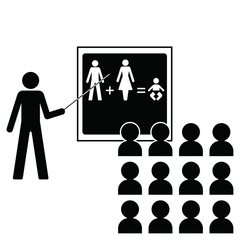GRSJ224/The Cause and Risk of Teenage Pregnancy
Teen Pregnancy Overview:
Teenage pregnancy rate has been inclining in the past decade, especially in United Kingdom. More teenagers are dealing with unwanted or unexpected pregnancies. The world health organization have estimated an approximately 16 million of pregnant women are from the age of 15-18. Teenage pregnancies contribute to 8-10% of all pregnancies in the developing world[1]. Although some teenage pregnancies can be a positive experience for young women, there are many risks and consequences that are linked to teenage pregnancy. Studies have shown that teenage mothers are three times more likely to of having postpartum depression (PPD) and infant’s mortality rate increases to 30% [2]. Every year, at least 60,000 teenage deaths are related to pregnancy or childbirth[3].There are also risks for babies that are conceived by teenage mothers. Such risks include, premature birth, prenatal deaths and sudden infant death syndromes. These risks are especially high during teen pregnancy.
The Cause of Teen Pregnancy
Violence:
There are several causes of teenage pregnancy. One of the risk factors are teens who were exposed to violence, abuse during childhood. They are twice as likely to be pregnant during adolescence than those who were not exposed to violence or abuse [4] A study showed women who have experienced teen pregnancy are due to past adverse events such as verbal abuse, sexual abuse, parents divorce or physical abuse [5]
Lack of Education:
Studies have also showed that youths with low education, with minor academic and labor expectations are also more likely to be pregnant during adolescence.The lack of sex education also causes teen pregnancy. Many teens in the developing world do not receive the appropriate sex education. Therefore, the lack of protective measures used during sexual intercourse is another cause of teenage pregnancy. Although in most developing countries, sex education is required starting primary school, but it has not decreased the rate of teen pregnancy[6]. Also, the emotional and social aspect of sex is not taught during sex ed courses. Although traditional approach of sex ed discourages underage sex, but the practice of underage sex is still occurring. Parents and teacher should seek more modern approach to teaching sex ed such as peer-led sex education. Which may help reduce the number of underage sex [7]
According to Jane Anderson, children who went through their parents' divorce are more likely to engage in premarital sex, the parents' of these children are also more approving of premarital sex, cohabitation, and divorce. This leads to earlier sexual activity in children which leads to teenage pregnancy. Girls whose fathers left the home before they were five years old were eight times more likely to become pregnant as adolescents than girls from intact families. (Anderson, 2014)
Risk Taking in Sexual Behaviours
Many teens feel obliged to have sexual intercourse because of peer pressure from their friends. In other social groups, some teens feel the need to move out of their family home and live independently. This may also cause them to want to be pregnant and have kids[8] The motive for such cases is so the teen can receive welfare and accommodations. The risk behaviour teens engage in could also be related to:
- Lack of knowledge of sexual health risks[9]
- Lack of knowledge of potential consequences and impact of their general health[10]
- Lack of self-confidence and negotiation skills with the partner at the time of intercourse[11]
Media Influence
Results from a research conducted by the Health Education and Educational Psychology departments of The University of Toledo has shown that more than 60% of teenage students participating in the research were unable to apply criteria and strategies to critically assess the quality and credibility of newspaper clippings about teenage pregnancy. [12] This result essentially shows that most teenagers do not possess the ability to form perceptions and decisions about teenage pregnancy without having their opinions manipulated by media portrayals of the topic. Exposure to highly optimistic or romanticized media portrayals of teenage pregnancy might hence risk teenagers underestimating its possible consequences in reality.
Example: Teen Mom
"Teen Mom" is a reality TV show that is immensely popular, with its Season Three premiere proven as the most popular original cable program among viewers aged 12 to 34.[13] Due, in part, to its popularity, it had also been involved in numerous controversies and debates over its social consequences and influences on teenage viewers. Martins and Jensens' research on the beliefs of teenage viewers about teenage pregnancy shown some deeply concerning findings. Exposure to this reality TV show led to an increased tendency to believe that teen mothers have an enviable quality of life, a high income, and involved fathers.[14] This is not surprising as many critics have censured the glamorization of the lives of teenage mothers in the show. The teenage mothers participating in the show has shot to stardom, appearing on the covers of magazines and tabloids. Teenage girls desperately seeking fame, having witnessed the success of Teen Moms stars, have resorted to getting pregnant in order to audition to be a star in the show.
Risks Associated with Teenage Mothers
Teen mothers:
Teen mothers are at high risk of developing hypertension, anemia and pre-eclampsia. Teen pregnancy can also have an effect on the teen's mental state. Teenage mothers are three times more likely to experience postpartum depression[15] Postpartum Depression can trigger the teen moms to have symptoms such as:
- Anxiety
- Mood swings
- Depression
- Crying
- Sadness
- Trouble sleeping
- Suicidal thoughts
- Feeling overwhelmed
- Feeling guilty
- Feeling not bonded to the infant
- Feeling confused and scared
- Irritation and anger, no patience
- Feeling hopeless
- Refuse to eat, or anorexia
- Insomnia
Symptoms of postpartum anxiety & OCD include :
- Thoughts are racing, cannot quiet one's mind, cannot settle down or relax
- Feeling like one has to be doing something at all times
- Feeling worried
- Having disturbing thoughts
- Afraid to be alone with the infant
- Feeling the need to check things constantly
- Physical symptoms like stomach cramps, headaches, shakiness or nausea
- Panic attacks
- Having no appetite
- Having trouble sleeping
- Feeling afraid that the infant may be taken away
Severe Postpartum Depression, Anxiety, and OCD could lead to suicide[16]
Other risks include:
- Toxaemia
- Premature Delivery
Prevention of Postpartum Depression
Nourishment
On top of having a sufficient amount of quality sleep, it is important to intake the hormone serotonin into your body system as it helps stabilize emotional well-being. Since it is not naturally occurring, we need to attain it from foods we eat. A well-balanced diet with adequate protein intake is recommended [17] Is it often overlooked, but there has been a research , which suggests a connection between dehydration and anxiety. [17] Women should intake an adequate amount of water regularly to prevent further problems.
Relaxation
Depression can cause women to encounter anxiety, irritability, and sadness in the process. Deep breathing can be a reliever. Diaphragmatic breathing, breathing to the bottom of our lungs, give our brains the maximum amount of fresh oxygen that it needs to function efficiently. [17] Deep breathing exercises can often clean our minds. Even simple everyday habits can make a huge difference, such as brisk walking, taking a long bath, or listening to calm music. It is also fine to pamper yourself because you do deserve it after a traumatic event. Scheduling a spa appointment or a full body massage is an effective way to completely relax.
Exercise
Research suggests that exercise impacts the extent of postpartum depression. A lack of exercise during pregnancy has been associated with higher levels of depression symptoms. A study from Pennsylvania State University discovered a link between exercise, body image satisfaction and postpartum depression. Their preliminary findings suggested that "depression and body image satisfaction are important psychological factors for intervention to improve women's pregnancy and postpartum psychological health, and that exercise in the pre-pregnancy period may offer women protective effects against depression in early pregnancy". [18] Additionally, a European study in 2009 analyzed 1,462 women who experienced depression after birth. From the 1,462 women, the ones who were physically active has a 19 percent lower risk of requiring antidepressants than women who were not physically active [18]
Risks Associated with Infants
Infants:
Teenage mothers who give birth to their children at the age of 13-17 are twice as more likely to give birth to a premature baby than those who give birth at the age of 20-23[19]
Definition of Infant Mortality
Infant mortality refers to the death of a child under the age of one. The rate is measured in the Infant Mortality Rate (IMR), which is the number of deaths under one year of age per 1,000 live births.
Cause of Infant Mortality:
Sudden infant death syndrome - Caused by smoking, drinking or drug using during pregnancies, poor prenatal care and also mother younger than 20. Injuries, accidentally or purposely inflicted. In 1988, sudden infant death syndrome accounted for nearly 50 percent of all prenatal deaths. However, the rate of sudden infant death syndrome has been dropping. In 1994, it was accounted for only 27 percent of prenatal deaths [20]
Teen Pregnancy and Infant Mortality
Teen Pregnancy and Infant Mortality can be closely related, as a great number of infant mortality rate results from the irresponsible and unplanned pregnancy during one's teenage period. As some of the teenage expectant mothers lack education, and are easily exposed to violence, inappropriate media influence, or irrational sexual behaviours, teen mothers' risks of not being able to protect their infants the way they desire to can be common. Studies show that postpartum depression is closely correlated to infant mortality, as well as the mothers' own deaths by suicide. Postpartum depression, anxiety, and OCD are commonly displayed by the teen mothers, making them unable to take care of the infants. Moreover, infants with teenage parents are shown to be more prone to physical abuse and maltreatment. Some infants with teen mothers are at risk of prematurity, increased rate for prenatal and neonatal mortality.
Infant Mortality Rates By Countries:
- In Romania, the infant mortality rate is 23.3 out of 1000 infants[21]
- In U.S, the infant mortality rate is 8.3 out of 1000 infants [22]
- In England, Wales and Sweden, the infant mortality rate is 6.2 out of 100 infants[23]
References:
- ↑ Pawaskar, N., & Yaranal, P. J. (2013). Outcome of teenage pregnancy: a retrospective study. Journal of Evolution of Medical and Dental Sciences, 2(29), 5435+. Retrieved from http://go.galegroup.com.ezproxy.library.ubc.ca/ps/i.do?id=GALE%7CA362965835&v=2.1&u=ubcolumbia&it=r&p=HRCA&asid=7d366035c97aade17d7e2247cec270a5
- ↑ Pawaskar, N., & Yaranal, P. J. (2013). Outcome of teenage pregnancy: a retrospective study. Journal of Evolution of Medical and Dental Sciences, 2(29), 5435+. Retrieved from http://go.galegroup.com.ezproxy.library.ubc.ca/ps/i.do?id=GALE%7CA362965835&v=2.1&u=ubcolumbia&it=r&p=HRCA&asid=7d366035c97aade17d7e2247cec270a5
- ↑ Pawaskar, N., & Yaranal, P. J. (2013). Outcome of teenage pregnancy: a retrospective study. Journal of Evolution of Medical and Dental Sciences, 2(29), 5435+. Retrieved from http://go.galegroup.com.ezproxy.library.ubc.ca/ps/i.do?id=GALE%7CA362965835&v=2.1&u=ubcolumbia&it=r&p=HRCA&asid=7d366035c97aade17d7e2247cec270a5
- ↑ Tamkins, T.. (2004). Teenage Pregnancy Risk Rises with Childhood Exposure to Family Strife.Perspectives on Sexual and Reproductive Health, 36(2), 88–89. Retrieved from http://www.jstor.org.ezproxy.library.ubc.ca/stable/3181201
- ↑ .Tamkins, T.. (2004). Teenage Pregnancy Risk Rises with Childhood Exposure to Family Strife.Perspectives on Sexual and Reproductive Health, 36(2), 88–89. Retrieved from http://www.jstor.org.ezproxy.library.ubc.ca/stable/3181201
- ↑ Mason, k. (2011). Teenage Pregnancy. InnovAiT, 4(3), 123–129. Retreieved from http://ino.sagepub.com.ezproxy.library.ubc.ca/content/4/3/123.full.pdf+html
- ↑ Mason, k. (2011). Teenage Pregnancy. InnovAiT, 4(3), 123–129. Retreieved from http://ino.sagepub.com.ezproxy.library.ubc.ca/content/4/3/123.full.pdf+html
- ↑ Leishman, J., & Moir, J. (Eds.). (2007). Pre-Teen And Teenage Pregnancy : A 21st Century Reality. Cumbria, GBR: M&K Publishing. Retrieved from http://www.ebrary.com
- ↑ Leishman, J., & Moir, J. (Eds.). (2007). Pre-Teen And Teenage Pregnancy : A 21st Century Reality. Cumbria, GBR: M&K Publishing. Retrieved from http://www.ebrary.com
- ↑ Leishman, J., & Moir, J. (Eds.). (2007). Pre-Teen And Teenage Pregnancy : A 21st Century Reality. Cumbria, GBR: M&K Publishing. Retrieved from http://www.ebrary.com
- ↑ Leishman, J., & Moir, J. (Eds.). (2007). Pre-Teen And Teenage Pregnancy : A 21st Century Reality. Cumbria, GBR: M&K Publishing. Retrieved from http://www.ebrary.com
- ↑ Maziarz, L., Feucht, F., Hany, S., & Ziegler, N. (2011). teenage pregnancy in the news: How do adolescents critically analyze the media? Annals of Behavioral Medicine, 41, S189-S189.
- ↑ Martins, N., & Jensen, R. E. (2014). The relationship between "teen mom" reality programming and teenagers' beliefs about teen parenthood. Mass Communication and Society, 17(6), 830-852. doi:10.1080/15205436.2013.851701
- ↑ Martins, N., & Jensen, R. E. (2014). The relationship between "teen mom" reality programming and teenagers' beliefs about teen parenthood. Mass Communication and Society, 17(6), 830-852. doi:10.1080/15205436.2013.851701
- ↑ Pawaskar, N., & Yaranal, P. J. (2013). The outcome of teenage pregnancy: a retrospective study. Journal of Evolution of Medical and Dental Sciences, 2(29), 5435+. Retrieved from http://go.galegroup.com.ezproxy.library.ubc.ca/ps/i.do?id=GALE%7CA362965835&v=2.1&u=ubcolumbia&it=r&p=HRCA&asid=7d366035c97aade17d7e2247cec270a5
- ↑ Pawaskar, N., & Yaranal, P. J. (2013). The outcome of teenage pregnancy: a retrospective study. Journal of Evolution of Medical and Dental Sciences, 2(29), 5435+. Retrieved from http://go.galegroup.com.ezproxy.library.ubc.ca/ps/i.do?id=GALE%7CA362965835&v=2.1&u=ubcolumbia&it=r&p=HRCA&asid=7d366035c97aade17d7e2247cec270a5
- ↑ 17.0 17.1 17.2 Kripke, Kate. "Can You Prevent Postpartum Depression?" Postpartum Progress. 1 July 2013. Web. http://www.postpartumprogress.com/can-you-prevent-postpartum-depression.
- ↑ 18.0 18.1 Collingwood, Jane. "Exercise and Depression in Pregnancy and Beyond." Psych Central. Web. http://psychcentral.com/lib/exercise-and-depression-in-pregnancy-and-beyond
- ↑ Gillham, B. (1998). Facts About Teenage Pregnancies. London, GBR: Continuum International Publishing. Retrieved from http://www.ebrary.com
- ↑ Gillham, B. (1998). Facts About Teenage Pregnancies. London, GBR: Continuum International Publishing. Retrieved from http://www.ebrary.com
- ↑ Gillham, B. (1998). Facts About Teenage Pregnancies. London, GBR: Continuum International Publishing. Retrieved from http://www.ebrary.com
- ↑ Gillham, B. (1998). Facts About Teenage Pregnancies. London, GBR: Continuum International Publishing. Retrieved from http://www.ebrary.com
- ↑ Gillham, B. (1998). Facts About Teenage Pregnancies. London, GBR: Continuum International Publishing. Retrieved from http://www.ebrary.com


